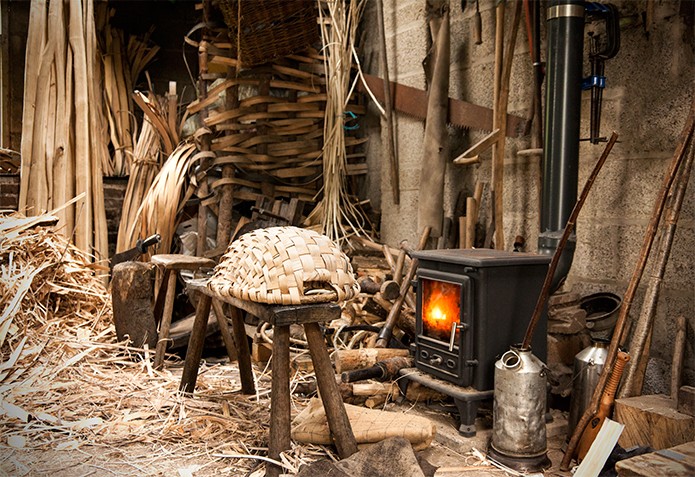
Like the oval ring of hazel that forms the structure of an oak swill basket, this ancient craft has turned full circle and has returned to its beginnings – from cottage industry to full-scale commercial enterprise and back to cottage industry again. A now unfamiliar object, even to those well-versed in rural crafts, the oak swill basket is traditional to the broadleaved woodland native to Southern Lakeland and would have seen many uses over the centuries from the coast, the farm, the factory and the home.
Historically these durable oak and hazel vessels have been used to carry and store a multitude of cargos from cockles and charcoal to bobbins and even babies. Every town and village in Southern Lakeland would have had a ‘swill-shop’ with a team of craftsmen working hard to satisfy the huge demand for such a versatile object. Today, only one ‘swill-shop’ remains; manned single-handedly by Owen Jones, the last full-time oak swill basket maker, who like that oval ring of hazel has turned his own full circle, from childhood woodland beginnings to a career in aviation and back to his beloved woodlands once more.
Here we are privileged to gain an insight into Owen’s dedication to learn and master this ancient form of woodworking, which together with his careful woodland management to ensure the continued sustainability of these materials native to the local area, has meant the continuation of the craft of broadleaved basketry. Because of his love affair with the craft, we can still enjoy the artisanal artform the mastery of the wood creates. Although these beautiful baskets are no longer used to swill sand from Morecombe Bay cockles, carry charcoal, catch bobbins from busy looms or make for a rustic cradle, they make an authentic and aesthetic piece of rural history for us to treasure with a practical use, be that modern-day peg carriers, log, laundry or vegetable baskets.
The term ‘oak swill’ isn’t likely to be instantly familiar to most people, even those who have a healthy interest in rural crafts and pastimes. For those readers who aren’t familiar, please can you explain what you do and the products you make?
I make oak swill baskets, which are very strong and robust oval-shaped baskets made from weaving thin strips of oak around a hazel oval rim, also known as a “bool”. These baskets had many traditional uses in the past, but are now used for a variety of modern uses, such as for shopping, gardening, log storage, and even as cradles for babies. I have been making oak swill baskets in the Lake District for 30 years, having been taught by a retired “swiller”, John Barker, who was one of the last swillers to have made them in his “swill-shop” for their traditional uses.
In addition to making oak swill baskets, I also make other green woodworking and coppice products, and run courses in both swill-making and green woodworking from my workshop in the Lake District and other locations around the UK.
I’m assuming with the word “swill” in the title, a swill basket may have been used in the farming industry to collect food for animals… Is that the case?
The original term for oak swill baskets is oak spelk baskets – spelk being a Nordic term for a splint of wood, still used in Northern England. They’re also known as oak spale baskets – a spale being an Old English word for a splint or sliver of wood, which itself derived from Old Norse or Proto-Germanic languages, meaning lath or thin bar of wood. In the Lake District, though, we refer to them as swills, and the people who make them as swillers.
Oak swill baskets were certainly used for farming purposes, and earliest records would indicate that swill-making was more of a cottage industry for own use on farms, but I couldn’t be sure if the term swill refers to pigswill – indeed, oak swill baskets in the round, rather than oval form, were also extensively in the cockle industry around the Morecombe Bay area, just south of the Lake District. These swills, with a hoop handle and loose weave, were used for collecting cockles at low tide and then swilling or swirling and washing away sand from the cockles through the gaps, which are very abundant in around the bay, so the term could equally derive from the cockle industry as farming.
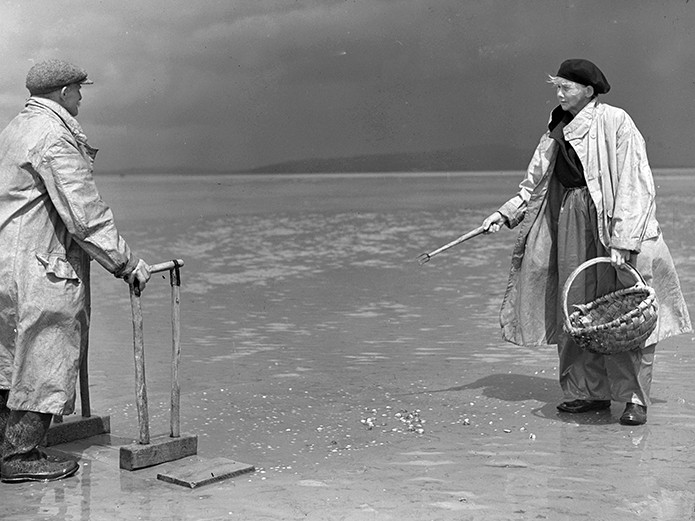
Reproduced by courtesy of Museum of Lakeland Life and Industry, Lakeland Arts Trust, Kendal, Cumbria
Can you talk about the history of oak swill baskets and their early usage?
Whilst we can’t be sure of the early history of oak swill baskets, as there isn’t any recorded evidence in wills or parish records prior to the 16th Century, the consensus of opinion is that they originated from the Vikings or Normans, both of which had an important influence in the Lake District area where they both settled between the 10th and 12th centuries AD. The Vikings started clearing forested valleys in South Lakeland in the 10th Century (indeed, many Nordic place names are still in existence today) and we know the areas they came from had a history of split wood basketry.
After the Vikings, the Normans settled in the area in the 11th and 12th Centuries, with large swathes of wild country given over to several monastic orders. Furness Abbey near Barrow-in-Furness was once the second wealthiest and most powerful Cistercian monastery in the country, behind Fountains Abbey in North Yorkshire. It was the monks that really got the wool, iron and corn milling industries going from the 12th Century. With the continuance of valley clearing, the monks exerted control over timber supplies, primarily because the charcoal industry required huge quantities of wood of a certain diameter for smelting iron ore in primitive heaths and bloomeries, and coppice woodland management techniques were introduced in the area to provide a continual supply of this wood.
By the 16th Century, the population had risen significantly, and so too had a number of other woodland trades developed to support the farming, mining and smelting industries. Examples of these woodland trades include the oak bark tanning industry for making leather bellows, gloves, shoes and saddles, etc (whereby bark would be peeled from oak to make vegetable tannin); potash from the ashes of birch twigs would be used for making soap for the fulling of cloth; coopering for making the staves and hoops for barrels and buckets; boatbuilding; and, of course, swill basket-making.
Oak swill basket-making benefited from having demand for the products from the farming industry, not just in Cumbria, but throughout northern England and Scotland, for feeding animals, harvesting potatoes, turnips and other crops, and broadcast sowing of seeds.
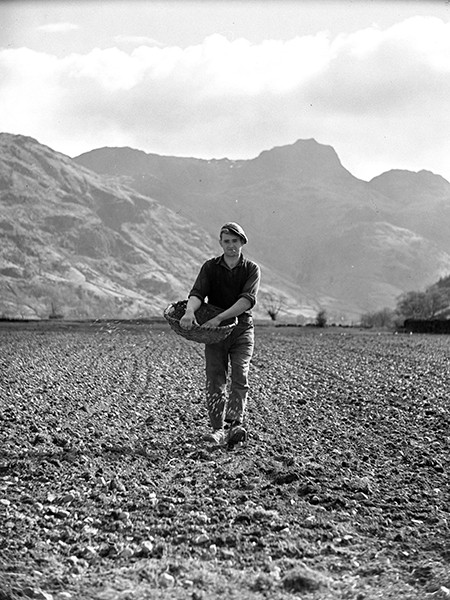
Reproduced by courtesy of Museum of Lakeland Life and Industry, Lakeland Arts Trust, Kendal, Cumbria
As the Industrial Revolution developed in the 18th and 19th Centuries, other uses for swills were found, and this really was the heyday for the swilling industry. Demand for coppice wood was at an all-time high – the Duddon Iron Furnace in Broughton-in-Furness was consuming 20 tonnes of charcoal per week, requiring 80 tonnes of wood!
Swills were used as containers, as well as measures, for the charcoal and textile industries (for example, a swill of a certain size would be used in the textile industry to store a particular-sized bobbin, and every lathe in a bobbin mill would have a swill underneath it to collect the bobbin being made, and charcoal was also being used extensively in the gunpowder industry which was thriving in the area), for transporting ore from the mines of Low Furness and West Cumbria and coal onto steamships docked in Liverpool, as well as being used by snuff factories and seed merchants, and for peat extraction.
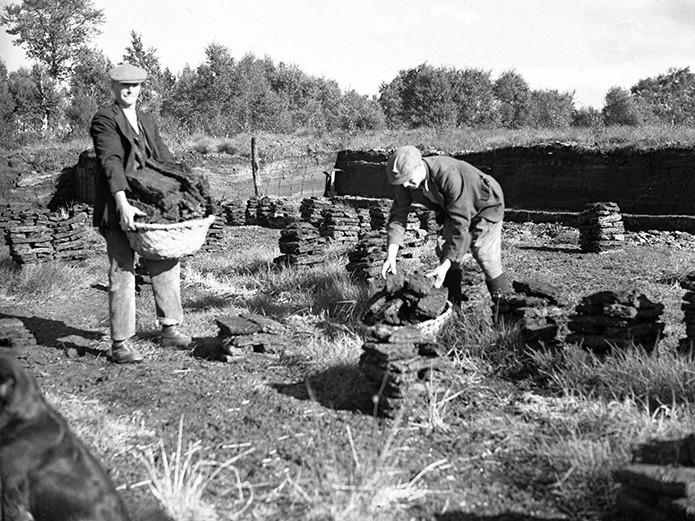
Reproduced by courtesy of Museum of Lakeland Life and Industry, Lakeland Arts Trust, Kendal, Cumbria
As well as industrial use, swills were also used extensively in domestic situations, such as market or shopping baskets, gardening baskets, storing logs and even as cradles for babies. The vast majority of houses in the Southern Lakeland area would have been in possession of at least one or two swills.

Reproduced by courtesy of Museum of Lakeland Life and Industry, Lakeland Arts Trust, Kendal, Cumbria
By the 19th Century, there would have been hundreds of thousands of swills in use, and swill shops were found in towns and villages all over Southern Lakeland, each swill shop employing teams of up to a dozen craftsmen.
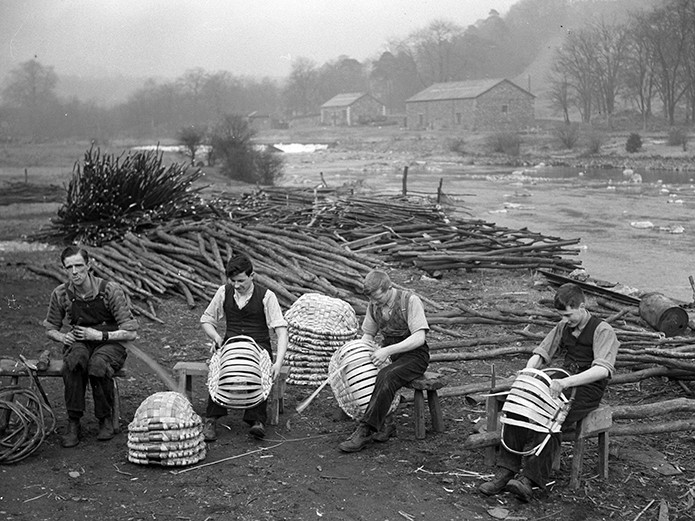
Reproduced by courtesy of Museum of Lakeland Life and Industry, Lakeland Arts Trust, Kendal, Cumbria
Oak swill basket-making is mainly confined to the Southern Lake District area of Cumbria, in the North West of England. What is it about this area which made it an important area for swill making and are there any other areas of the UK known for oak swill making?
The oak swill industry was really concentrated around the High Furness area, including Broughton in Furness, Eskdale, Coniston, Duddon Valley and Windemere, so a relatively small area. This an area with a large amount of coppiced sessile oak used for charcoal burning in smelting iron during the industrial revolution, and young coppiced oak trees are a requirement for the oak swill industry.
However, Cumbria isn’t the only known for split oak basket-making, as there was an area around Bewdley / Wyre Forest in Worcestershire where there were a lot of woodland industries in the 18th and 19th Centuries to support heavy industry in the area, such as charcoal burning for iron smelting, and bark peeling to make vegetable tannin for the tanning industry. Similar to Cumbria, the split oak basket-making industry developed in the area, but instead of being called a swill, it was called a wisket, but also known as a scuttle or spale basket. The wisket was very similar to the swill, but differed slightly in weave structure and in some of its preparation methods.
Aside from the swill and wisket, there are many other areas of the country renowned for woven split wood basketry, but from hazel, ash and willow, rather than oak, such as the Whitehaven corfe, made nearby in Whitehaven area to support the coal mining industry in Whitehaven and Workington areas, such as the “William” colliery, in the 19th century. The corfe was a bigger basket than a swill, and made from woven hazel with an iron hoop, which was lowered down the mine and taken on a trolley to transport coal underground.
Another area of the country with a tradition for making woven baskets is Wales, where the Cyntell, or Welsh-framed basket, originated which were made for agricultural purposes (they were often known as the Welsh potato basket). A cyntell is a framed basket, made from a solid rim, is ribbed and has weavers, but the main differences are that a cyntell is made from thin willow rods or hazel, rather than split oak.
There are lots of other forms of split wood baskets to be found across Europe, in Spain, Portugal and Southern France, but these are made from chestnut instead of oak.
Whilst many areas of the country had their own styles of woven basket, they never became industries in the own right, but were crafts and skills passed down from father to son to make baskets to supplement meagre incomes or for their own use; whereas swills became an industry.
The Sussex Trug, however, is unusual as it’s an unwoven form of basket construction, being nailed together, rather than woven.
What were the reasons for the decline in the swill industry?
Even by the 1930s, swilling was still a big industry here in Cumbria, but things started to decline after the war what with the decline in the charcoal industry, mechanisation and other alternatives, such as cheap plastic replacing wood. By the middle of the century, the textile industry in Lancashire had all but disappeared, together with the bobbin mills that relied on it; the last bobbin mill closed at Spark Bridge in the early 1980s. As markets shrunk, these changes had a major effect on the Lakeland coppice industries, with many of the old coppice woods being turned over to conifer plantations in the 1960s and ‘70s, or simply neglected. With fewer coppice workers, coppiced oak became difficult to source for making swills.
It wasn’t just the lack of supply of coppiced oak wood that resulted in the decline of the swilling industry, as the demand for swills also dwindled during this period; in agriculture, wire potato baskets were far cheaper than swills, and whilst the feedback from farmers was that they didn’t like wire baskets, they were cheaper, and that was the priority. So, large orders for swills from agriculture merchants dried up; likewise demand from other large-scale purchasers, such as ironmongers and steamship companies.
In the post-war years, no one new was being taken on to learn the trade, but there were still plenty of people working in it, generally alone or in pairs, rather than in larger swill shops. It was an ageing industry, where those retiring weren’t being replaced, which is the same for a number of other traditional crafts and trades. By the 1980s, there were only a few swillers left working, but all were on a part-time basis; one I knew was a signalman on a railway during the day, but making baskets part-time. Often, as good swill wood was become very scarce, these swillers would have to buy in their oak from other parts of the country, rather than Lakeland itself.
The last of the line of coppice merchants in the area was Bill Hogarth; he spent a life in the woods supplying coppice oak for swilling, as well as beam and birch for Morecambe Bay Haaf Net (sea net) fishing, bean poles and pea sticks, and the like. When Bill died in 1991, it was the end of an era in the coppice industry for someone who solely derived their living from supplying woodland products.
Do you source your wood from local coppice woodsmen, or do you partake in the practice of coppicing yourself to harvest your raw material?
I got oak from Bill Hogarth originally, but he intimated he wouldn’t be around for ever, and to fulfil orders after he died, I’d have to get wood ordered in from the Forest of Dean, or from other small-scale suppliers locally.
In the mid-1990s, I started managing a woodland owned by the National Park Authority. By the ‘80s, and certainly in the ‘90s, the ecological benefits of coppice woodlands were being championed, and the National Park Authority was very supportive of my endeavours. It’s a good symbiotic relationship – I have a plentiful supply of timber for crafts, whilst the Authority gets its woodland worked, and they are seen to be supporting traditional woodland trades. One of the conditions of my management is that I have to be self-sufficient, and have to work with hand tools rather than machinery. I’ve been cutting my own material in the same block of woodland for over 20 years now, but now have another couple of blocks that I’m managing as well.
It’s important for me to leave a legacy for another generation of swill makers, so I’ve created a nursery area within the woodland and each year plant a couple of hundred new oaks from a seed factory and I’ve installed deer fencing to protect the area. I get huge satisfaction from seeing woodland regeneration. I only ever cut as much as I need.
The coppicing aspect of swilling is part of the ethos of what I do – the journey of selecting and felling raw materials to the finished product and being totally self-reliant. I never buy-in materials these days, and not having an industry to rely on is lovely.
I really enjoy coppicing – waking up on a frosty morning to go cutting oak in the winter, or peeling oak in the Spring – and would hate to have a machine that could supply me with materials, as I’d just be a weaver, and swilling, to me, is much more than that, and has enough of a variation to fulfil me.
Who are you customers these days now that most of the traditional uses for oak swill baskets are no longer part of modern life?
By the time I started making swills in the 1980s, industrial demand had waned, apart from a snuff factory in Kendall still using traditional methods of production and a few farmers using them for feeding animals and potato picking, so they were mainly used for domestic purposes in the home and garden.
Fortunately, there was still enough demand from people who remember using them – as cradles, shopping baskets, laundry baskets and the like – many of whom when they saw that I was resurrecting an old craft didn’t know they were still being made, and were happy to buy them. There wasn’t a problem selling them in the early days.
Swills were only ever seen as an everyday item, similar to how we view a cardboard box, they were purely functional; although people liked and revered them, they wouldn’t pay too much for them. I was selling swills for £14 in the early days, and when I increased the price to £15 in line with inflation, I was met with resistance by some farmers, and told that I shouldn’t be inflating prices. These days I’ll sell a standard 22-inch size swill for £68, but when you consider that from start-to-finish, I’ll have put in about 5-6 hours work, so you can see, I’m not making big money.
In trying to define who are my customers these days, there’s no such thing as a typical customer, however given the range of uses – log baskets for woodburners, laundry baskets for washing lines, vegetable baskets for gardening, etc – I would say that it puts customers in a certain wealth bracket, but that’s not always the case; I’ve had students buy swills from me, and other people have commented they’ve saved up and bought one as a treat, so there’s a real mix.
I imagine there’s a lot of wastage from making a basket; are there any uses for the natural by-product?
Nothing ever gets wasted in swilling. Excess shavings are used as fuel for boiling water in the bending process. Larger pieces are used to make charcoal and firewood. People working with greenwood tend to have lots of waste, but not in swilling.
How long can we expect a traditional oak swill basket to last, and what can we do to improve longevity?
It really varies depending on use. If a swill is used like it was in the old days, such as farmers dragging around in muddy ground, then not long. Whereas if it’s used for domestic purposes, such as storing laundry or as a shopping basket, then it will last for many years, and dare I say, a lifetime.
Of course, if the swill hasn’t been made properly, then it won’t last long. For instance, if the hazel for the rim was cut in the summer, then it will be sappy or sugary, which attracts woodworm.
If you’re unsure of the origin of the swill, then my advice would be to treat around the rim for woodworm, just to be on the safe side.
I understand you trained as an aviation engineer, so how did you become involved in the craft, which was said to be on the decline?
I grew up in a small village in the middle of the New Forest in the south of England; the forest was my playground back then, climbing trees and making dens. At the age of sixteen, I left home to join the army, where I spent the next five or six years. Upon returning to civilian life, I moved to the Lake District, where I trained as a helicopter engineer and then an engineer in civil aviation. It was during this time, I reconnected with the forest, first making willow baskets as a hobby in my spare time, and then, having been introduced by my father-in-law to the last of the traditional swillers, John Barker, I started making swills. I spent a few days working with John, and I believe my youth and strength helped him in the more physical aspects of swilling, and we then worked together part-time for the next two or three years and I learned a lot from him.
Somehow, swilling took over, and I made a full-time living from it around 30 years ago. Having turned my back on the forest during my army years, it felt like coming home, and it was nice to find a career that suited my temperament – working with flexible and inexact measurements rather than precision joints. It’s lovely working out in the woods; it’s easy just to forget time.
Apart from swill-making, can you explain what other items you make?
Originally, I just made oak swills, but over the years, I started making other oak products, such as charcoal, peeled oak for turning into gates and post and rail fencing, and peeled oak twigs for jewellery stands. The by-product from this, oak bark, is sold to J&FJ Bakers tannery in Devon, which is the last oak bark tannery in Britain making high quality soling and insole leather, which is a nice continuum of an industry; we do this between mid-April and mid-June, when the sap has started to rise, with the oak cut and peeled on the same day.
It isn’t just oak products either; I cut hazel rods for bean poles, the tips of which are used for pea sticks, and the boles as handles for besom brooms, along with birch that I gather for the besom brushes.
I also grow different varieties of willow for making cyntell or traditional Welsh frame baskets, and cut rush in Somerset once a year at the end of June / early July for making rush hats.
Whilst I make other products, oak swills are my bread and butter and that is what I do most of the time.
Would you say there’s a seasonal aspect to what you do?
Absolutely; my year tends to be focussed on cutting and gathering the majority of the materials I need in the winter, when the wood is dormant, and then making baskets and gates on wet days specifically. Around March and April, I’ll run courses into making oak swills and willow cyntell, as well as bark peeling, and then from May to September I spend five months travelling around the UK demonstrating at county shows, woodland events and craft fairs, such as Hatfield House, where I’ll sit and make a few baskets each day whilst talking to people – ultimately, it’s a marketplace. I enjoy this time – meeting and talking to other craftspeople around a fire in the evenings and camping out; these craftspeople are almost like colleagues in a way.
From what was once a thriving cottage industry you are now regarded as the last commercial oak swill basket maker – or “swiller” – in the UK. What does it mean to you to be one of the last remaining “swillers” and where do you see the future of the craft?
In many ways the craft has lived its life – from cottage industry to large industry and back again to cottage industry – it really has gone full circle. It’s only ever going to be a small domestic market now as there are alternatives. Anyone can buy a cheap willow basket from the likes of IKEA for a few pounds. Sure, it won’t be British-made, but it’s at an affordable pricepoint for most people. We can’t stop progress and change, and I’m certainly not trying to arrest an era.
For me, it’s important to keep regional culture alive, as if we’re too homogenous, we lose culture, so I do feel sense of responsibility to ensure it continues. That’s why I’m receptive to helping out those people who attend courses to do more with them at the end of the course to take things to a higher level. I’ve also written a booklet about the craft, and there is a double DVD out. I’m really happy being a one-man-band, without the pressures of growing a business per se; I have achieved a nice balance of being able to sell all that I can make. I’m proud to be involved in the continuation of this trade.
Do you consider swilling to be a trade and not a craft then?
I consider it to both a trade and a craft. It’s a trade, in as much as I earn a living from it, but what I’m doing is repeatedly producing items from a practised or mastered skill or craft. However, I’m not pushing boundaries, so I wouldn’t consider myself an artist, although some people have progressed from my courses from making functional baskets that are now more sculptural. That’s not to say that I don’t have an artistic side in me, as the peeled oak I produce is a transitory artform, and I see a real beauty in that.
For anyone wishing to learn more about swilling do you have any advice?
I think the prospects for someone learning the craft are encouraging due to the changing attitudes in woodland management, encouraging the practice of coppicing, so there is at least easier access to raw materials – small diameter oak timber – compared to previous decades.
In the short term, before you make any commitments, such as resigning from your day job, make a hundred swills and reassess where you are after that – is it too physically demanding, or is it mentally stimulating enough…? It’s like learning the piano – how many people start and then give up after only a few weeks or months – so don’t make too many sacrifices until you know it’s for you. Be sure that you’re confident you’ll enjoy making the swills, and it doesn’t become a challenge.
To sustain a long career, be prepared to work hard and always try to attain reaching a new level. No two swills are the same, and there is no such thing as a perfect swill and there is the potential for a lifetime’s work of refinement. I liken it to playing an instrument – you never actually master it completely, but it’s possible to get to level of mastery where playing it is enjoyable, and you get something out of it, rather than fighting the materials.
Thanks to Owen Jones for taking time out of his busy schedule to answer our questions. For our interview with Owen revealing the skill involved in making an oak swill, click here.
All images © Merchant & Makers with the exception of those reproduced by courtesy of Museum of Lakeland Life and Industry, Lakeland Arts Trust, Kendal, Cumbria. Images from the Joseph Hardman archive can be viewed online at www.lakelandmuseum.org.uk/hardman. Prints of all Hardman images can be purchased through the website.
Further details on Owen Jones Oak Swill Basket Maker: www.oakswills.co.uk

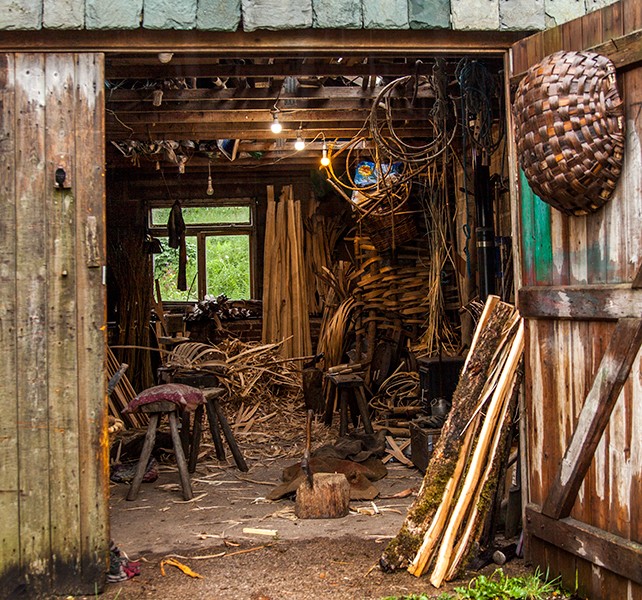
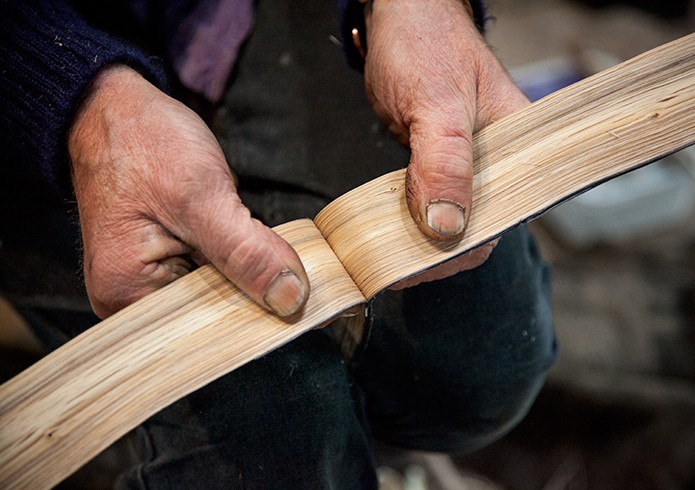
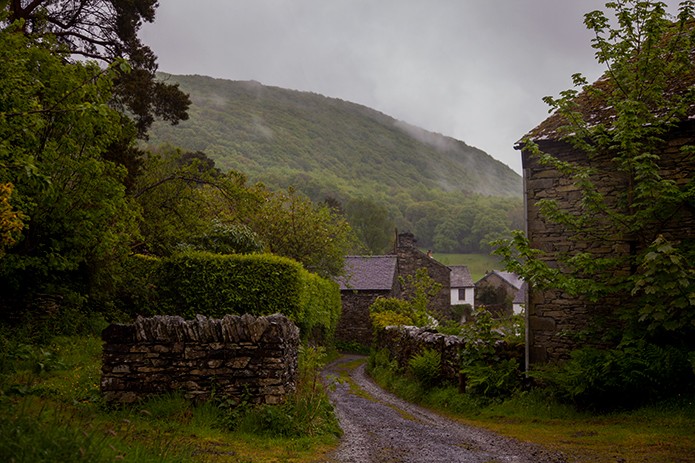
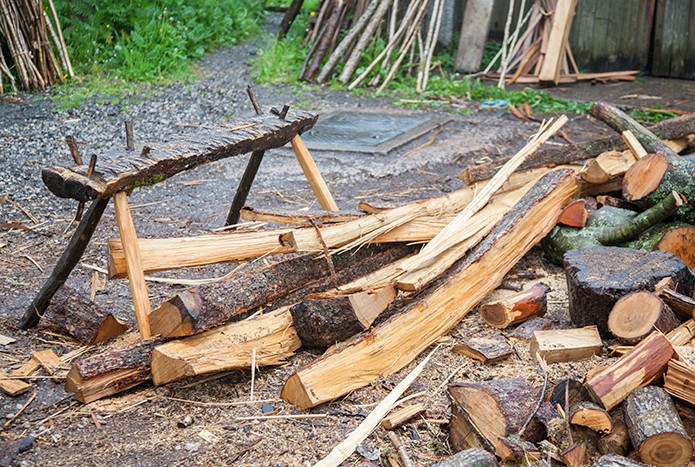
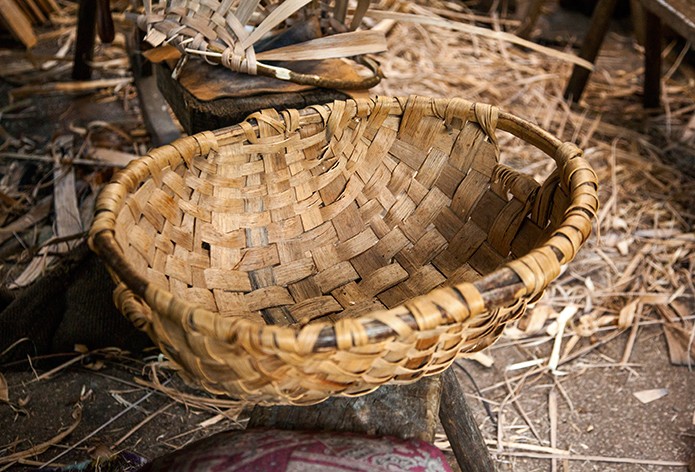
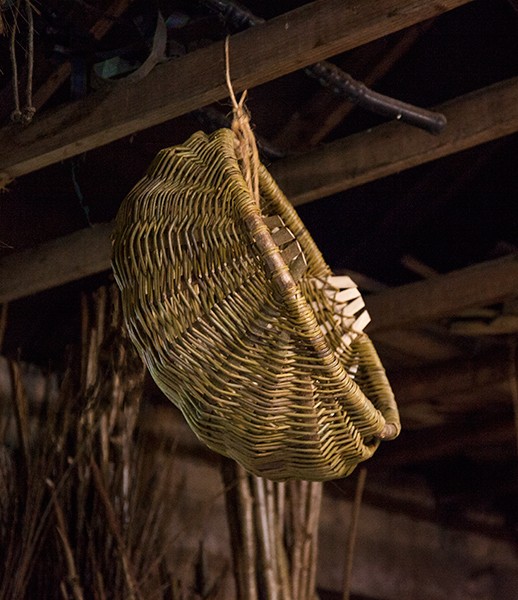
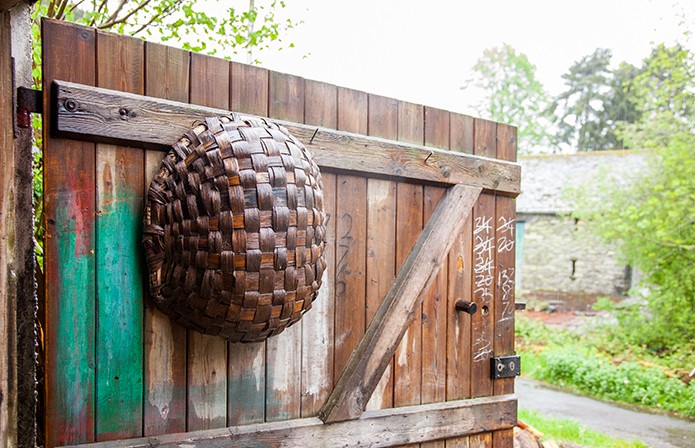
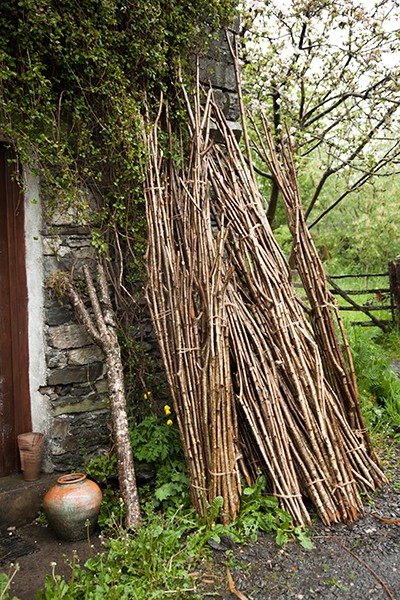
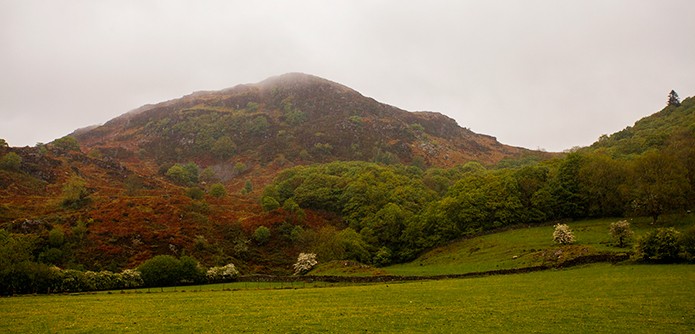
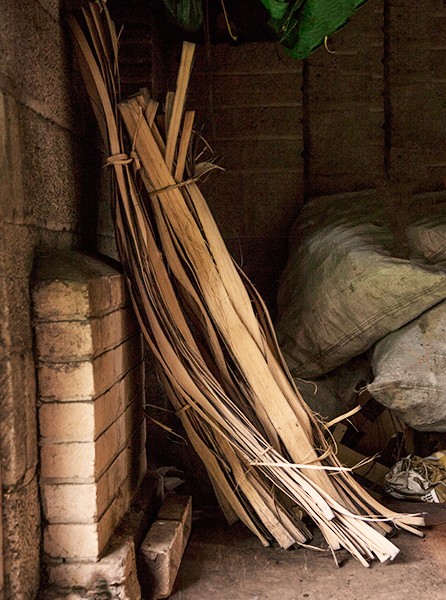
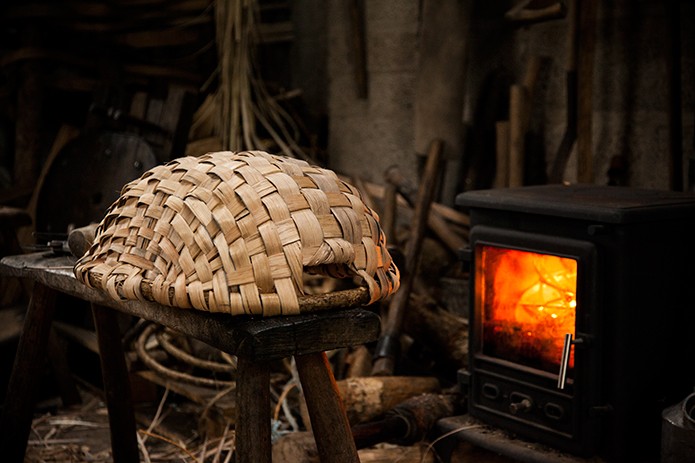
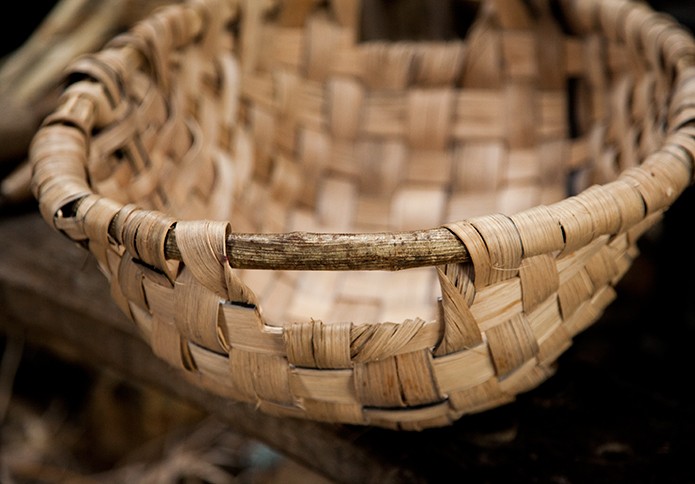
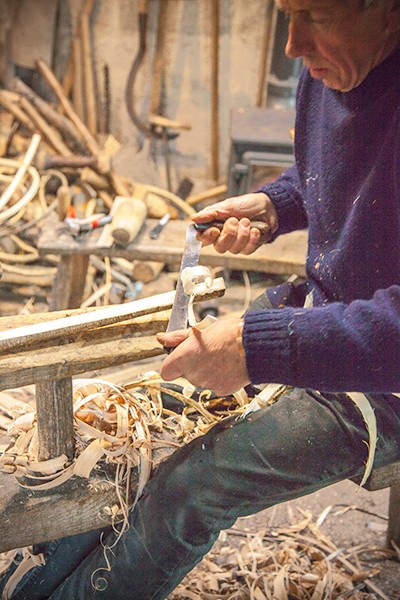
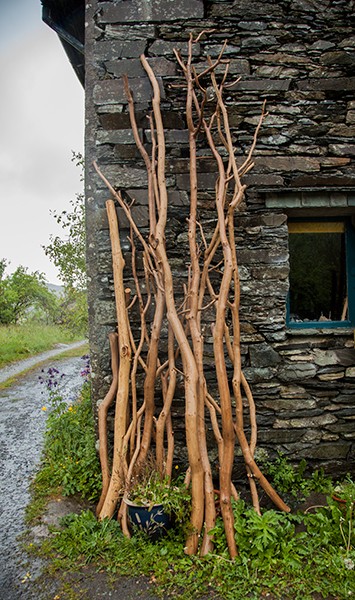
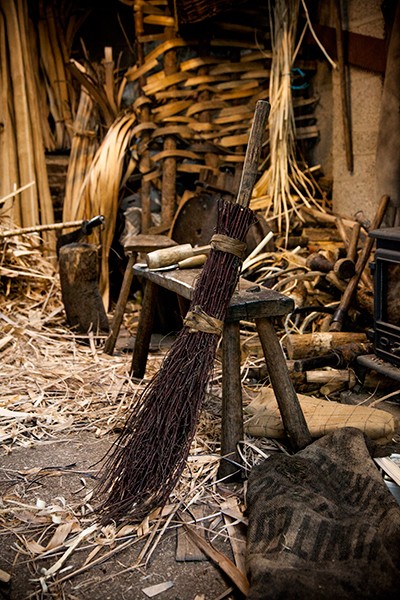
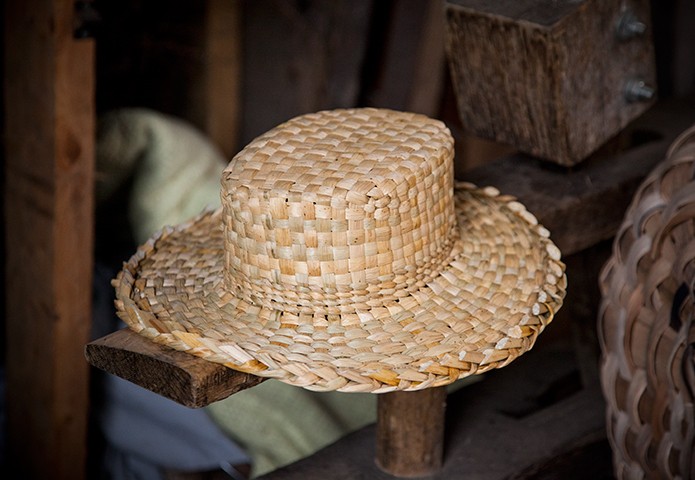
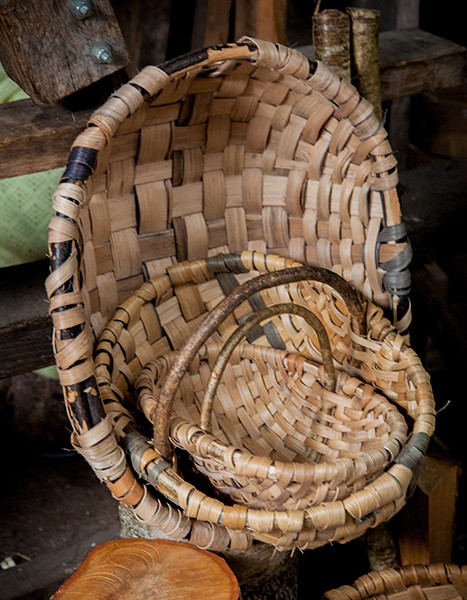
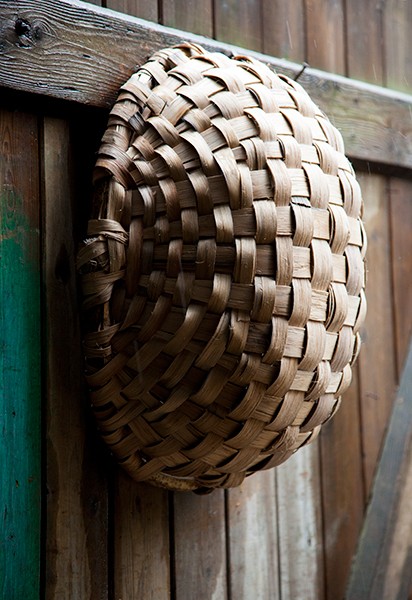
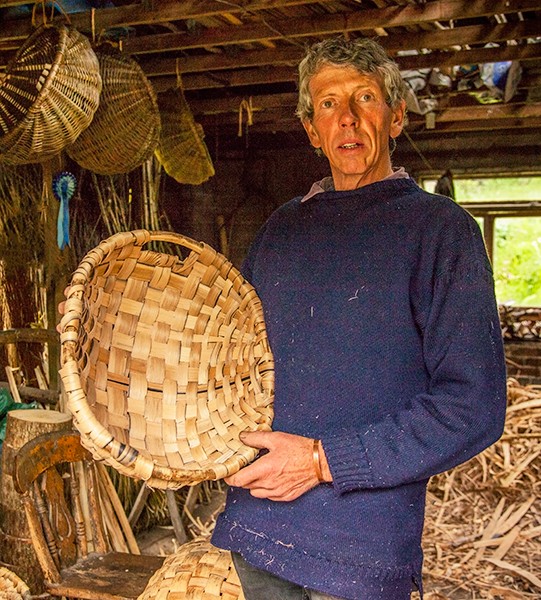









Tuesday, September 26th 2023 at 6:18 am
[…] history and culture of basketryGather To Gardner blog post Ahh.. IrelaundIreland’s National Inventory Of Intangible Cultural Heritage – BasketryAn Insight into Cumbrian Oak Swill Basketry […]
Monday, November 12th 2018 at 6:49 pm
[…] Thanks to Owen Jones for taking time out of his busy schedule to answer our questions. For our interview with Owen exploring the history of oak swill making in Cumbria, click here. […]